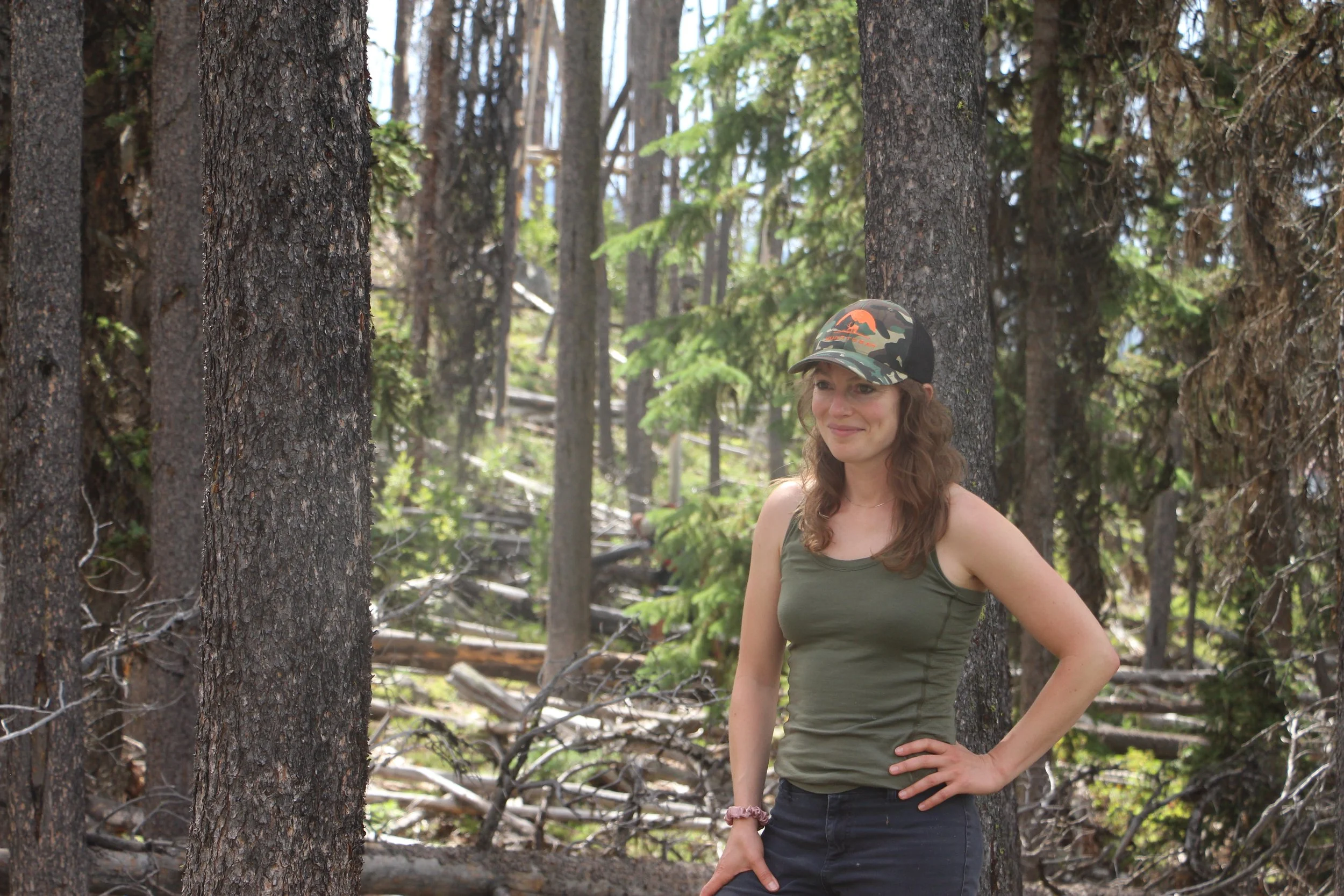Carmen Vanbianchi
Research Director, Homerange Wildlife Research
Methow Valley, WA
8/23/22
With a population of just over 50, lynx are at a dangerous tipping point in Washington state. Large wildfires have vastly reduced their available habitat and rising temperatures have decreased the snowpack they have adapted to thrive in. Luckily, they seem to be slowly making a comeback, or at least resisting extinction, in large part due to the dedicated efforts of wildlife biologist Carmen Vanbianchi and her colleagues. Carmen has dedicated her career to passionately advocating for lynx, and firmly believes in the right of every species to exist regardless of their perceived economic value. She argues “It’s our responsibility and our job to not just throw up our hands… and [to] keep looking for solutions.”
After leading us up to the top of a wooded hillside surrounded by pines and the charred remains of past wildfires, she showed us proof of the lynx presence through wildlife cameras placed in strategic locations throughout the forest. She explained that, although the extreme and widespread fires of recent years have done significant damage to lynx habitat, lynx have actually evolved to thrive in heterogeneous environments that include sections of burned forest alongside more luscious woods. This reinforced what we have been hearing from other speakers, that prescribed burning can mitigate bigger fires and create a healthier, more resilient ecosystem.
Despite the lynx’ promising resilience, it can be hard to stay optimistic when progress is slow and there are few others making lynx a priority in wildlife management. “I’m just one little person pushing a rock up a hill and we need lots of people pushing rocks uphill,” she told us. However, as public opinion is slowly shifting toward seeing the innate value in all parts of ecological systems, there is hope of lynx making a meaningful recovery in Washington thanks to lynx biologists like Carmen.
By Kaitlyn Salazar

